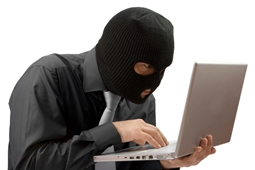Each day, almost 3,000 laptop computers are stolen. Many of these thefts could be prevented. Here are some practical steps you can take to prevent your portable computer from becoming a police statistic.
-
Lock your laptop in your office during off-hours.

-
Whenever possible, take your laptop home with you so you always know where it is.
-
Review and understand the laptop insurance coverage included in your business and homeowners’ policies to ensure that you have coverage for theft.
-
Keep only the most necessary proprietary information on the laptop.
-
Do not load passwords on the laptop, particularly those allowing remote and email communication with clients or the office.
-
Never leave your laptop unattended in a public place, even for a moment!
-
Consider installing a boot-up password, available on most laptops, so only users with your password can access the hard drive.
-
Back up your files and store them in some place other than the laptop carrying case.
-
Consider engraving the company name or some other identification on the laptop cover.
-
Be especially cautious about installing software from unknown sources—it may contain a virus.
-
Pay attention to where you use your laptop. Be aware that someone behind or next to you can see your computer screen. This is especially true on an airplane.
When Traveling
-
Carry your notebook in a strong, padded,nondescript bag. Do not use a carrying case that advertises there’s a computer inside.
-
Never leave a laptop in full view in your car, and never check the computer as luggage at airports.Do not leave your laptop unattended.
-
At airport security checkpoints, be observant. Don’t place the laptop on a conveyor belt until you are ready to walk through the checkpoint.
Laptop and Data Security Tools
Several effective laptop and data security options are available to protect your equipment from theft:
-
IBM has “secure” notebooks that are equipped with Asset ID, a radiofrequency-based security and asset-tracking technology.
-
Automatic online backups by Toshiba prevent anyone from reading the data your computer sends without your pass phrase. Information is encrypted before your PC transmits it.
-
Track-it is a product that blasts a sonic alarm if you get more than 40 feet from your laptop to alert you that it has been left behind.
-
A software program, CompuTrace, calls in with its location to a Central Monitoring System. These calls are made at regular intervals, providing the electronic serial number, phone number (from which it is calling) and other traceable information.
-
For some inexpensive ways of reducing laptop theft, try security cables, stands, AnchorPads and boxes that offer good protection.






